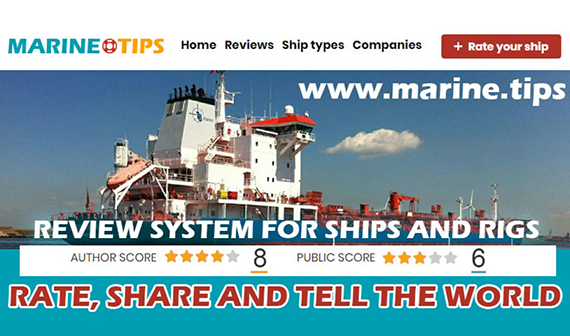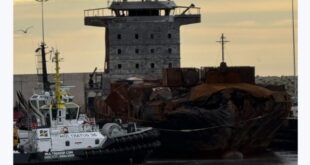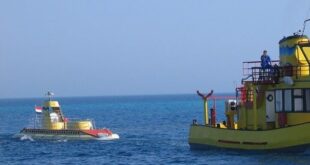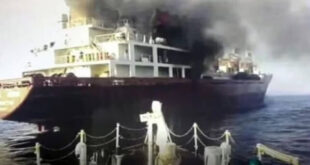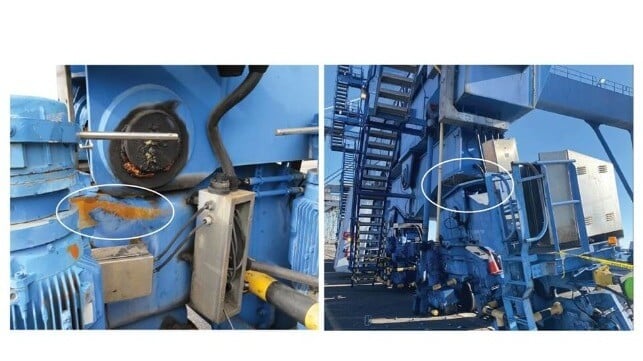
The National Transportation Safety Board has determined the cause of an STS crane allision at North Charleston Terminal last year. A towboat mate failed to consider the horizontal extent of the STS crane when he made passing arrangements with a dredge in the channel, and his chosen course put his tow – a tall crane barge – in contact with the STS crane’s lowered boom. On the afternoon of January 4, 2024, the towboat Royal Engineer and the crane barge Stevens 1471 got under way from a terminal on the Cooper River for a berth at the Pierside Docks, a short three-hour trip downriver on the other side of the North Charleston Terminal. The crane was lowered, but its upper mast extended about 145 feet above deck level. As Royal Engineer approached North Charleston Terminal, its passage was blocked by the dredger Brunswick, which was working on dredging out the bottom just a few hundred feet off the terminal’s pier. The dredge’s floating discharge pipeline extended all the way across to the opposite side of the river, and was temporarily blocking all of the navigation channel. The only options for safe passage were to ask the dredge crew to stop work and move their floating pipeline so that traffic could get by, or to go through a narrow slot between the dredger and the pier, where the terminal’s cranes were working cargo. Royal Engineer’s mate had the watch, and he contacted Brunswick about an hour out to make timely passing arrangements. He planned to ask the dredger crew to move their pipeline and wanted to give them enough advance notice. The Brunswick did not respond to two calls. At 1605, Royal Engineer approached Brunswick’s work area. A large boxship was moored at the terminal and an STS crane boom was lowered to move containers. The boom extended about 200 feet out over the channel, 100 feet beyond the beam of the boxship. At this point, Royal Engineer’s mate was able to reach Brunswick’s captain over VHF, and he asked him to move the pipeline. The dredger’s captain declined because his crew was busy and he already had his crew on a task and would “have to stop them to go do something else.” Instead, he suggested that Royal Engineer could safely go through the 300-foot slot between Brunswick and the pier, and he offered to turn the dredger to make this possible. Royal Engineer’s mate accepted this arrangement. Considering the narrowness of the gap, he posted a deckhand to watch for obstructions. He did not consider the barge’s air draft and the STS crane’s reach out into the channel until he began to pass Brunswick. The deckhand thought it would clear, but he was mistaken. The mate reversed engines too late to avoid contact. The STS crane operator was in his control booth aloft and was in harm’s way. He saw the hazard coming and sounded his warning horn moments before impact, then braced himself. Immediately after, he fled the operator’s cabin and ran down a ladderway to the pier. The STS crane stayed upright, and even had enough strength to stop Royal Engineer/Stevens 1471’s forward momentum. Royal Engineer’s mate reversed away from the crane; the Brunswick disconnected its dredge line and left the area in case the STS crane were to collapse; and the boxship got under way, headed away from the terminal. The STS crane was badly damaged, and was determined to be structurally unstable. Torqued like a screw by impact at the far end of its boom, the STS crane’s vertical frame was twisted, the gantry assemblies were “wrecked,” and the base was rotated off its rails. Remarkably, it was repairable, and it was restored within a year and put back into service. The overall cost of the repair came to just $4.5 million, and was the only significant charge; the crane on Stevens 1471 was virtually undamaged. NTSB concluded that the root cause was the towboat mate’s failure to identify the STS crane as an overhead hazard. “Ship-to-shore cranes, when conducting cargo operations on a vessel and in the lowered position, may extend considerably beyond the side of the vessel and become a hazard to vessels with high air drafts transiting nearby. Mariners should always consider their vessel and tow’s air draft when identifying hazards to navigation,” NTSB advised.
Original article available on the page of publisher.
ARTICLE LINK: maritime-executive.com
 Maritime Monster All Jobs Moored Here
Maritime Monster All Jobs Moored Here

